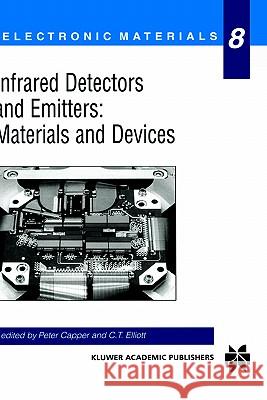Infrared Detectors and Emitters: Materials and Devices » książka
Infrared Detectors and Emitters: Materials and Devices
ISBN-13: 9780792372066 / Angielski / Twarda / 2000 / 478 str.
Infrared Detectors and Emitters: Materials and Devices
ISBN-13: 9780792372066 / Angielski / Twarda / 2000 / 478 str.
(netto: 744,56 VAT: 5%)
Najniższa cena z 30 dni: 771,08 zł
ok. 20 dni roboczych.
Darmowa dostawa!
Infrared (IR) detectors fall into two main categories, thermal and photon. The earliest detectors of IR were thermal in nature, e.g. thermometers. The subsequent developments of these detectors, such as thermopiles, resistance bolometers, Golay cells and pyroelectric detectors, can operate at ambient temperature but have disadvantages of insensitivity and slowness. A wide variety of semiconductor photon detectors have been developed and these possess very high sensitivity, high frequency response but have the disadvantage of needing cryogenic cooling, particularly at longer wavelengths. In the main, the applications have been in the military sphere, but widespread industrial and scientific applications also exist. The majority of development funding for these semiconducting IR detectors has, however, come from military sources. This book is an attempt to provide an up-to-date view of the various IR detector/emitter materials systems currently in use or being actively researched. The book is aimed at newcomers to the field and at those already working in the IR industry. It is hoped that the former will find the book readable both as an introductory text and as a useful guide to the literature. Workers in one of the various IR areas will, hopefully, find the book useful in bringing them up-to-date with other, sometimes competing, technologies. To both groups of readers we trust that the book will prove interesting, thought-provoking and a spur to further progress in this fascinating and challenging field of endeavour.











